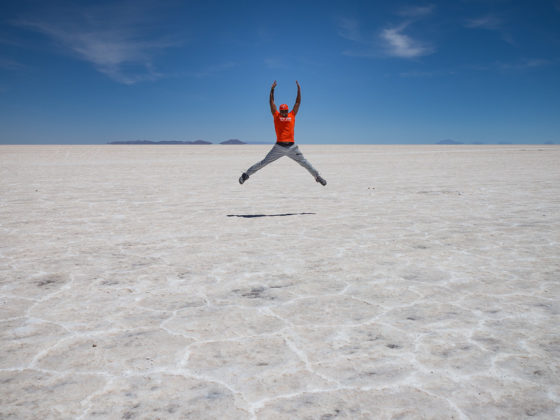The Salar de Uyuni is the world’s largest salt flat, covering an area of 4,086 mi2 (10,582 km2). I had originally planned to do a 1-day visit like most tourists, but instead jumped at an opportunity for a 3-day tour. The salt flats were the highlight for me, but not necessarily the best part. The other sites in and around Uyuni plus the Eduardo Avaroa National Reserve deserve just as much spotlight.

Uyuni Salt Flats
Several travelers photograph the salt flats with the “perspective” shots, where an individual appears small compared to a trinket, or large over other individuals. But I ended with this photo taken by a friend.

The Milky Way from San Juan
The first night I slept in the town of San Juan. It probably had less than 500 residents. All of the travelers went to bed after dinner, but I decided to brave the cool desert night, walk a bit outside of town, and look up. Camera settings for anyone keeping score: f/2.8, 8 seconds, ISO 4000.

Dali Desert
I traveled through the salt flats and the reserve by 4x4. Driving behind another 4x4 in the desert isn’t fun because of the dust trail left behind. But driving along a 4x4 made the dust trail art like. Those are not llamas running, those are vicunas.

Aguas Calientes
The hot springs were the last site I visited before crossing the border into Chile. The water was geothermally heated to 40 °C while the outside temperature in the morning was 13 °C.

Dakar Rally monument in Bolivia
I wasn’t familiar with the Dakar Rally, so I was surprised to find this monument here. The Dakar Rally’s route was changed in 2009 due to security concerns. The race is now held in South America and the 2017 route will go through Paraguay, Bolivia, and Argentina. Unfortunately, I missed the actual rally. I’m not that lucky.

Train cemetery
Uyuni was a transportation hub with some of the trains dating back to the late 1800’s. Eventually, with the downfall of the mining industry, the trains were abandoned.
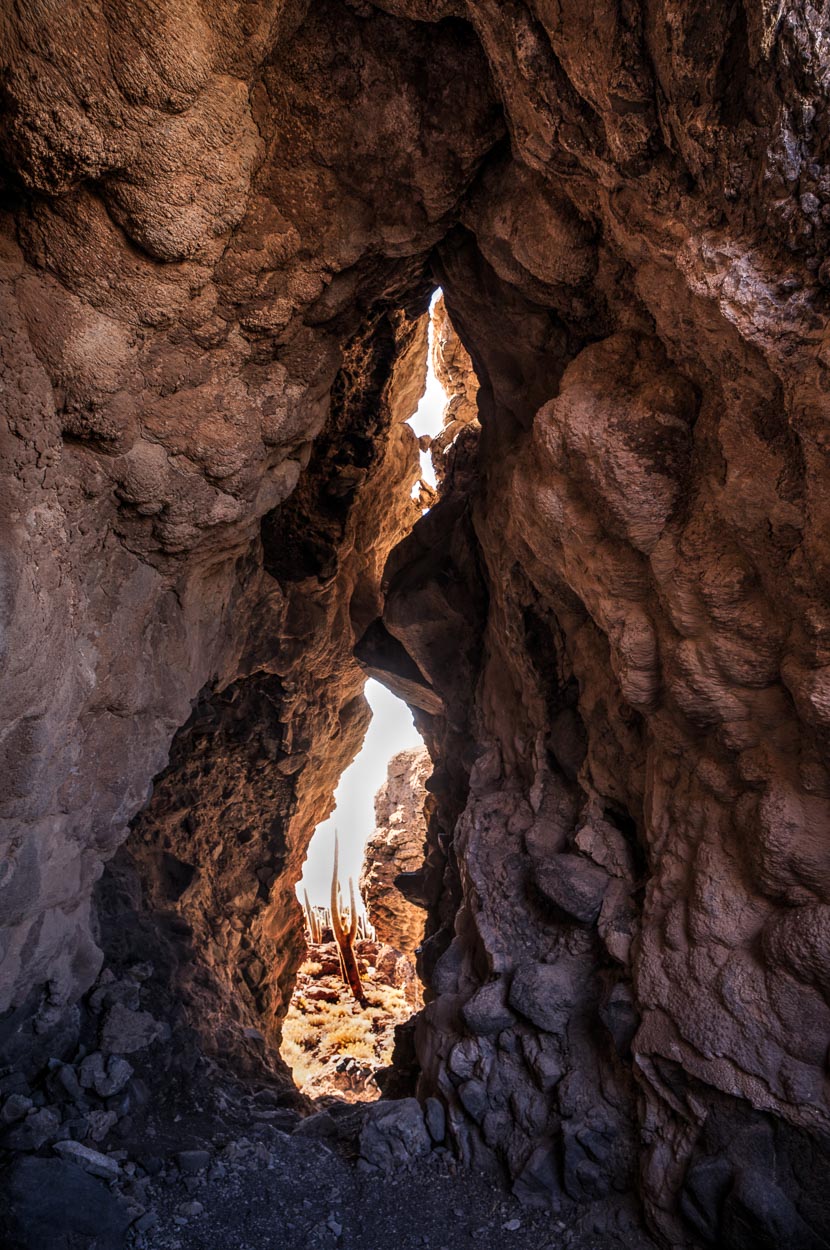
Inka Wasi (Incahuasi) Island
Inka Wasi Island is surrounded by salt but used to be surrounded by water thousands of years ago. The island has several cacti and at first didn’t seem interesting to photograph. I walked around for 45 minutes and looked for something. I wasn’t sure exactly what I was looking for until I found this large opening in the rocks. This natural, small passage felt like I looked at the island from inside a home.
Intermission
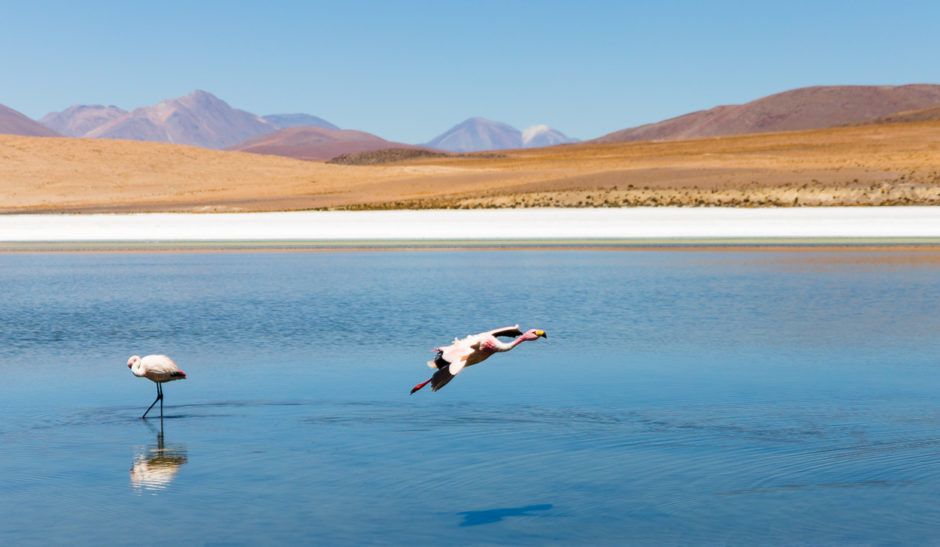
Laguna Canapa
Laguna Canapa is one of the smaller salt lagoons in Bolivia with a surface area under 2 square miles (5 square km). I was more excited to see the James’s flamingos, also known as the puna flamingo. I wanted to photograph the flamingo flying, but it was challenging with no telephoto lens (I used the Tamron 24-70 mm lens). I stood close to the swampy water and got a bit dirty.

Laguna Colorada
I’ve seen green and blue lagoons but never a red one. Colorada Lagoon gets its distinct color from the pigmentation of the algae. The average depth is about 40 cm: You might be able to walk across it.
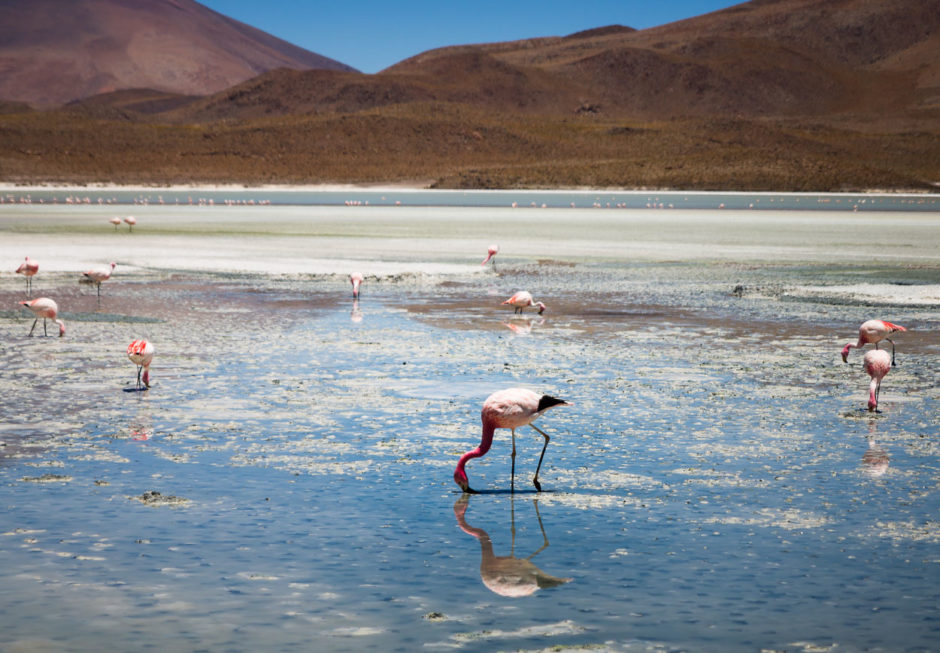
Laguna Hedionda
As the name suggests in Spanish, this lagoon stinks. I originally thought the smell was due to the droppings left behind by the numerous flamingos (there appeared to be over 100,000 in population). But the smell is caused by the sulphur in the water. The flamingo in the center foreground is the Andean flamingo characterized by the black triangle pattern on its rear feathers.
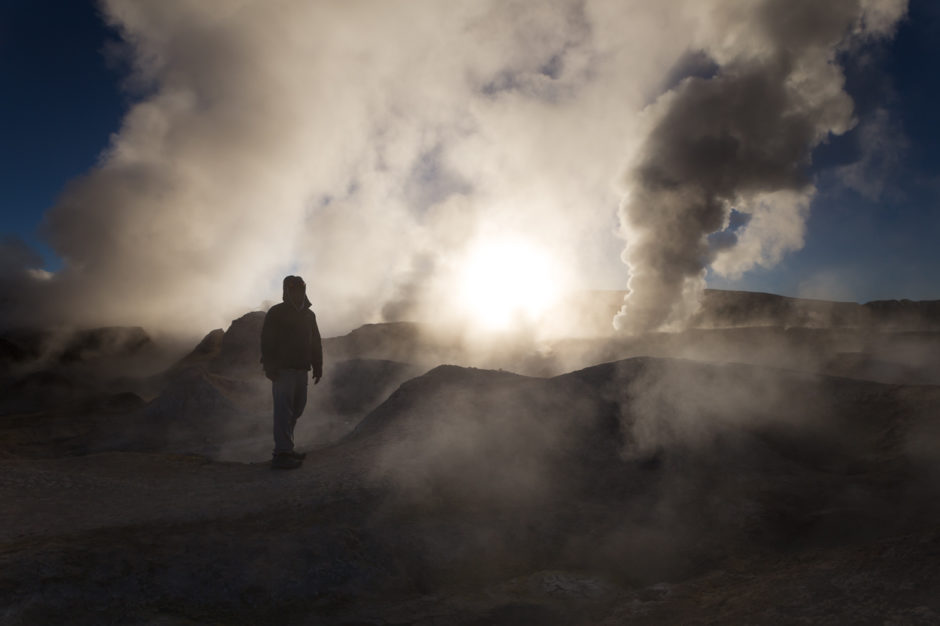
Geiser Sol de Mañana (Morning Sun)
The Morning Sun Geyser doesn’t discharge water but rather sulphuric gas. My driver stated, “you can’t see the gas when the sun is fully out.” So I photographed the geysers at 6 a.m. I was able to stand near the gas without any danger...I think.
